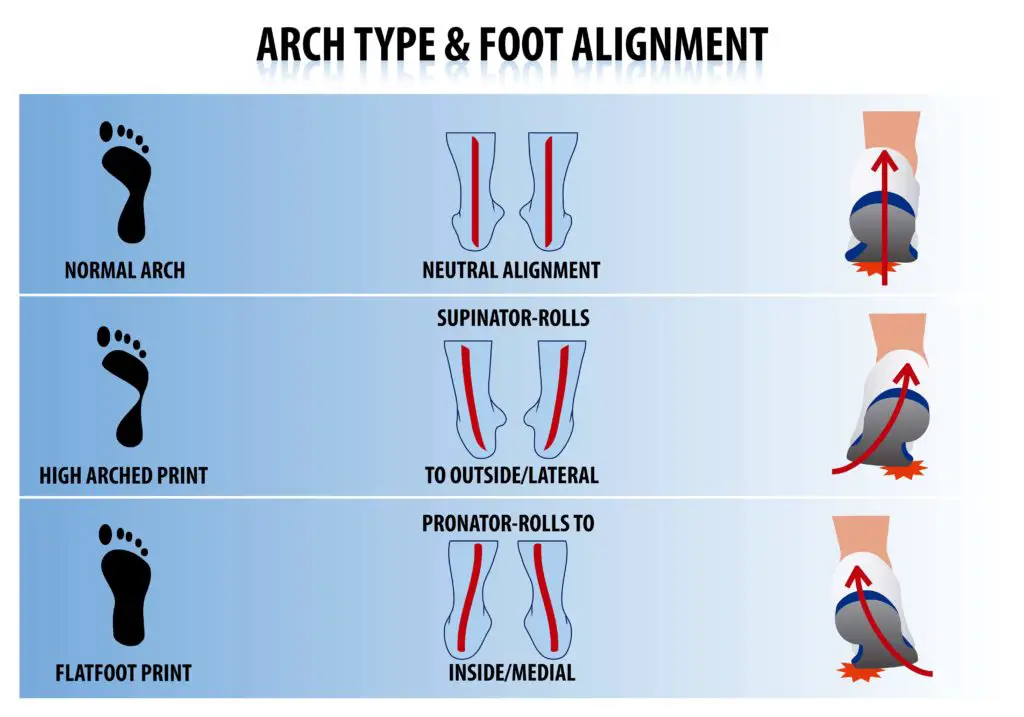If you run regularly to keep yourself fit then you know that wearing the right pair of shoes is very important. There are tons of running shoes out there in the market, some of them are very cheap running shoes and few ones are really expensive running shoes in India. So then how do you choose right running shoes for yourself.
There are various other factors you need to keep in mind while buying the right pair of Running shoes online in India. Whenever you are buying Running shoes always remember these few things in mind :-
(i) Running Shoes are continually evolving.
(ii) Each model of the running shoe within each brand is built for a specific foot type or foot arch.
(iii) There is no “perfect shoes for running” or “best running shoes” on the market.
(iv) Each runner’s foot type is different in shape and there are different running shoes for different foot types. Brands like Nike, Adidas, Skechers etc. understand these things and manufacture running shoes based on runner’s foot arch and pronation.
(v) You will see hundreds of Running shoes and deals on Amazon and Flipkart but unfortunately there is no way to filter the shoes based on your foot arch, pronation, terrain and usage.
Whether you run regularly or you run few times in a week or month, you need to first understand how your feet work. Understanding the biomechanics of your feet will help you better understand what type of running shoe is right for you.
This step-by-step guide will help you in understanding basics of foot mechanics, pronation, arch types etc. which will ultimately help you in choosing the right running shoes for yourself.
How to pick the best running shoes online – Step by Step Guide
- Figure out your arch type (Normal arch / high arch / flat feet)
- Based on your running form (pronation) and arch type figure out if you need neutral shoes, stability shoes or motion control shoes.
- Take measurements of your feet (this includes length and width of mid-foot and forefoot)
- Decide if you would need road running shoes or trail running shoes.
- Based on your past running history decide if you would need daily running shoes or long distance / marathon shoes.
Let’s dive deep into each of these steps:
1. Determine your Foot Arch
Determine your arch type and what type of arch support would you need. Basically you will have either of these three feet type – normal / medium arch, high arch or flat feet.
Knowing your foot type is the first step toward finding the right shoe for you.
To find out your arch type you need to do this small wet foot test. This test can be done in less than ten minutes and will be helpful in telling you your foot type.
i. Normal (Medium) Arch
- Most common foot type and are considered “normal” pronators
- Can wear just about any shoe
- Medium arch runners are best suited to a stability shoe that provides moderate arch support (or medial stability)
- Lightweight runners with normal arches may prefer neutral-cushioned shoes without any added support.
- Neutral arch runners can even wear a performance-training / race shoe that offers some support but less heft, for a faster feel
- If you have normal arch, it is recommend to wear neutral shoes
ii. Flat (low) Arch – You can see almost your entire footprint
- Flat feet people often find it hard or painful to run
- You have a flat foot, which means you’re most likely an overpronator
- A micro-second after your foot strikes the ground while running, your arch collapses inward too much, resulting in excessive foot motion and increasing your risk of injuries.
- If you have a Flat or low arch, it is recommended to wear either stability shoes OR motion control shoes.
- Stability shoes feature dual-density midsoles, supportive “posts” best for mild to moderate overpronators.
- Motion-control shoes have firmer support devices, & straight external last.
- The motion control shoes are best advised for severe overpronators, as well as for heavy runners (over 75 kgs)
iii. High Arch – You can see just your heel and a thin line on the outside of your foot
- You have a high arch, the least common foot type
- This means you’re likely an underpronator, or supinator
- Underpronators usually have too much shock traveling up their legs, since the arch doesn’t collapse enough to absorb it; prone to more ankle sprains
- Underpronators are best suited to neutral (cushioned), curved lasted shoes
- Runners with a high arch need a softer midsole to encourage pronation
- It is very important to note that an underpronator’s shoes have no added stability to reduce or control pronation
- Runners with high arch feet should avoid wearing motion control shoes.

An alternate way to find out your arch type is by looking at your old shoes. Look at your old pair of shoes that you have used for Running. Do you see any patterns on the sole of these shoes?
Is there more wear and tear on the inside of the shoes or on the outside of the shoes?
Is the sole worn out throughout the shoe sole?
2. Neutral Shoes vs Stability vs Motion Control shoes – Which ones do you need?
If you followed the step one mentioned above you should be in a position to decide easily if you need neutral shoes, stability shoes or motion control shoes.
The below cheat sheet will help you to pick the correct shoes as per your arch Type. Take a screen shot or a picture of this cheat sheet.

3. Measure your foot size (both length and width)
One of the most critical part of the shoe selection process is to measure your foot dimensions. For example if you have wide feet you should only order shoes that are made for wide feet.
It is very important to get the right fit for your running shoes to prevent any injuries or blisters.
The below video will help you in following the right steps to measure your foot size.
Note: Measure both your feet because there are chances that your one foot may be bigger than the other. Always wear socks while taking measurements.If you are buying running shoes from a shoe store you should pay attention to your feet length and width.
4. Where do you Run (Terrain)
Most of us run either on roads / pavements or on trails.
There are different shoes made for road running and different shoes for running on trails.
If you run on roads you would need a more harder sole to support and bear repetitive strikes on hard surfaces.
You would need to buy road running shoes if you regularly run on roads.
To select the right road running shoes you need to know which shoes are made for road running and which ones are made for trail running.
The sole of a trail running shoe is very different than a road running shoe.
Trail-running shoes have more tread and traction than road running shoes. The sole has to be designed in such a way that it provides support and grip to the runner for gripping rocks, mud and soil.
You can read more about Trail Running shoes here.
5. How often do you run – Daily Running Shoes vs Marathon Running Shoes
You should ask yourself this question every time you buy running shoes online. Shoes that are made for long distance or marathons are lightweight and offer more comfort to the runner as compared to daily Running Shoes.
It is very common nowadays for runners to have two different pair of shoes:-
(i) A pair of traditional, highly cushioned and comfortable running shoes in which they log the majority of their training mileage. These shoes are usually heavier and with a high drop.
(ii) A second pair of lightweight, low drop shoes to be used when they train at slower distances or marathon days. Read more about Marathon running shoes here.
Summary
It is very important to first understand your feet type before buying a running shoe. Buying a wrong type of running shoe is not only a waste of money but it may also result in injuries like Plantar fasciitis, Achilles Tendonitis, Shin splints or runner’s knees etc.
Therefore you must first understand your pronation type and feet type before you jump onto Amazon or any other website to buy running shoes online.
